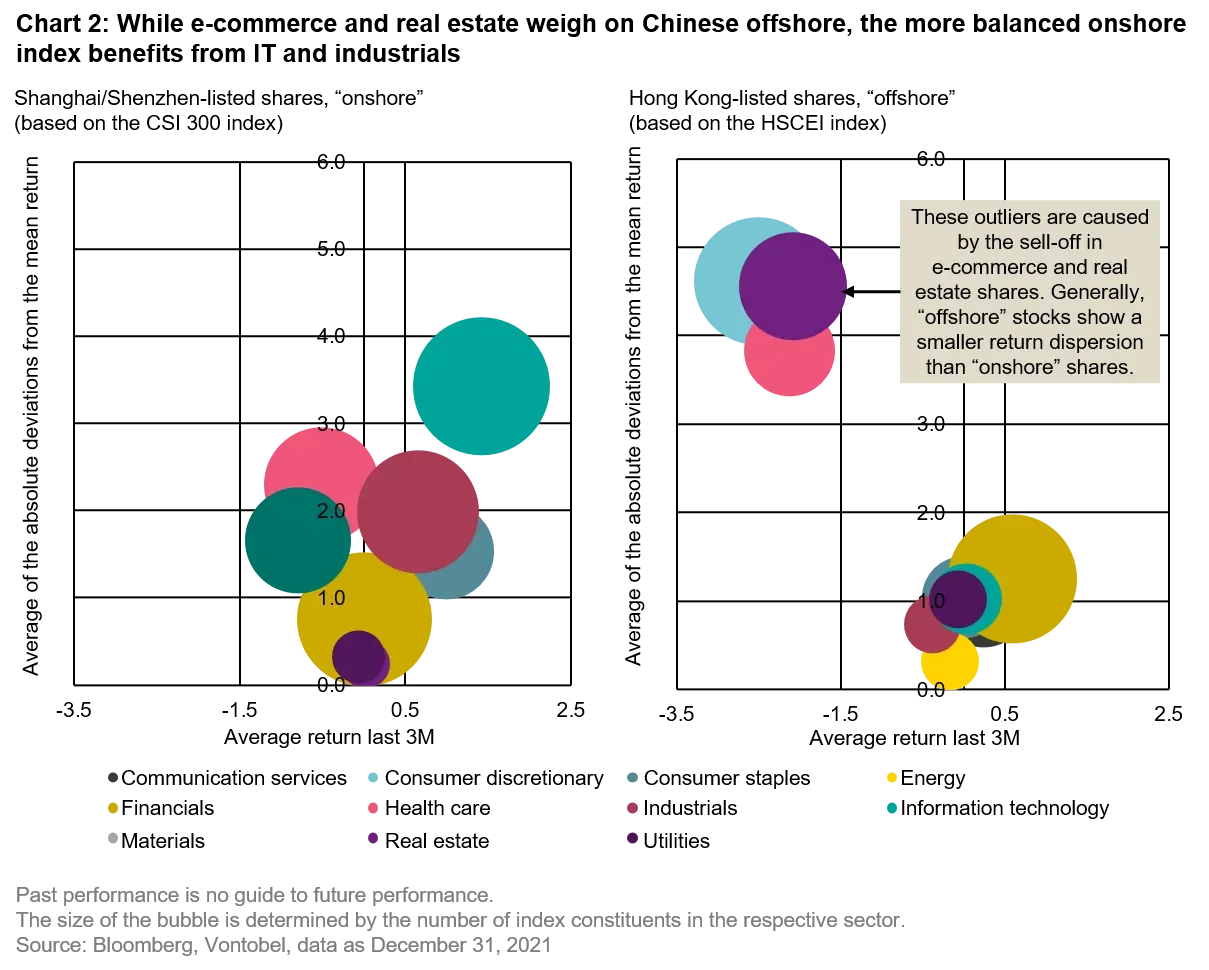Conviction Equities
Concentrated and fundamentally driven high-conviction equity portfolios managed by four teams specialized in emerging markets, impact investing, thematic investing, and Switzerland.
Economists typically see China as one big market, but investors need to be more discerning. A failure to spot the difference between the country’s two major equity marketplaces would be like lumping together the Dow Jones and the Nasdaq indices.
And just as these two US stock exchanges follow rules of their own, so do the exchanges in Shanghai and Shenzhen on the one hand, and Hong Kong on the other. During the correction of the Chinese market in the second half of 2021 due to real-estate and regulation trouble, “onshore” stocks had an edge over “offshore” ones. This year, however, the situation seems to have changed somewhat with offshore getting off to a stronger start.
In the second half of 2021, MSCI China, essentially a measure of Hong Kong-listed shares (also called H shares or “offshore”), lost 23% in US dollar terms. The main reasons are a slowing economy on the back of a previously tight monetary policy, a wave of heavy regulation of various private sectors, the destabilized real-estate market following the Evergrande group’s debt woes, and electricity shortages. At the same time, exports are still booming while private consumption is down.
However, the shares of companies listed in Shanghai and Shenzhen – so-called onshore equities, also known as China A shares – performed much better, giving up just under 1% in dollar terms over the same period. So why did China “as a whole” lose much more? This is down to MSCI China’s reliance on large-cap technology companies listed in Hong Kong, and the fact that this index only includes 20% of the A shares’ actual capitalization. Thus, MSCI China and large-capitalization stocks such as Alibaba, Tencent, Meituan, and JD.com (mainly H shares) correlate strongly with the regulatory activity of the Chinese government, as shown in the China Regulation Barometer by the US investment bank Goldman Sachs (see chart 1).

A comparison of the composition and development of the stock indices that track these two market segments provides further clarification. Instead of the MSCI indices, however, we use the CSI 300 (for A shares) and the HSCEI (for H shares) indices calculated by the China Securities Index Company and the Hong Kong Exchange HKEX, respectively. A closer look at these indicators reveals the broader diversification of the CSI 300. The size of the colored circles corresponds to the number of stocks in the respective sector. By contrast, the Hong Kong offshore index is dominated by e-commerce, i.e. the consumer discretionary sector as well as financial companies. With e-commerce and real estate weighing on the HSCEI for the above-mentioned reasons, the CSI 300 benefits from its balance and the greater importance of the information technology and industrial sectors. Here, companies with exposure to green technologies, food, and defense technologies, have performed particularly well. At the same time, their range in terms of returns is wider, as can be seen from the average of the absolute deviations from the sector performance plotted on the Y axis (see chart 2). Onshore stocks, therefore, generally show a wider return dispersion than offshore ones. However, the Hong Kong index also displays some outliers in terms of performance and returns, but this only holds true for the real-estate and consumer discretionary sectors, which have been hit by the Evergrande crisis and regulation in recent months.

All in all, we believe that the Chinese equity market, and particularly Chinese A shares, can offer good opportunities for stock pickers. Despite many imponderables, the risks in China are not systemic, in our view. Some innovative market leaders may even benefit from party politics or the current five-year plan, and continue their winning streak. In this respect, the central bank’s recent adoption of a looser monetary policy, though generally beneficial for equity indices, probably isn’t even that important.